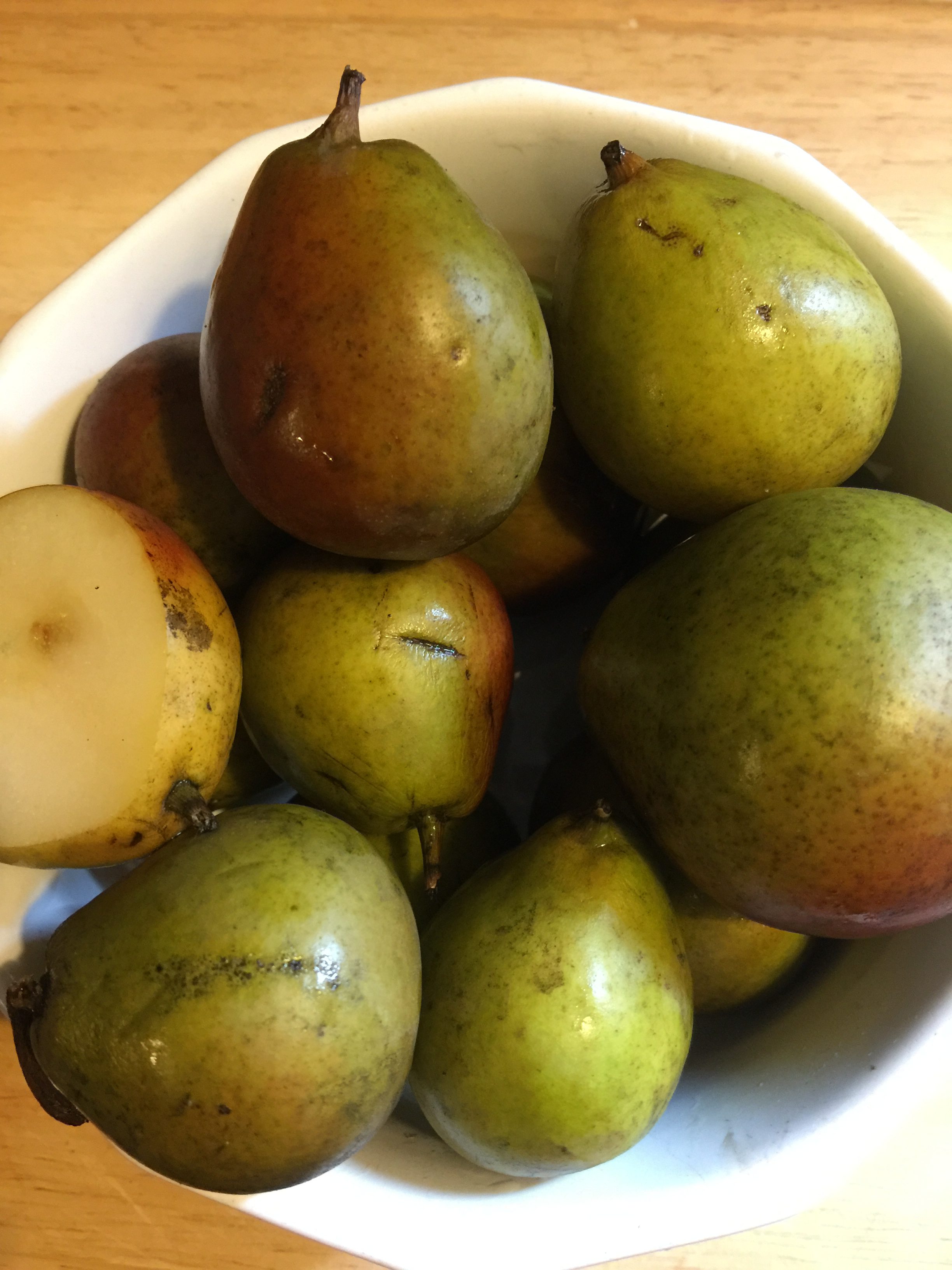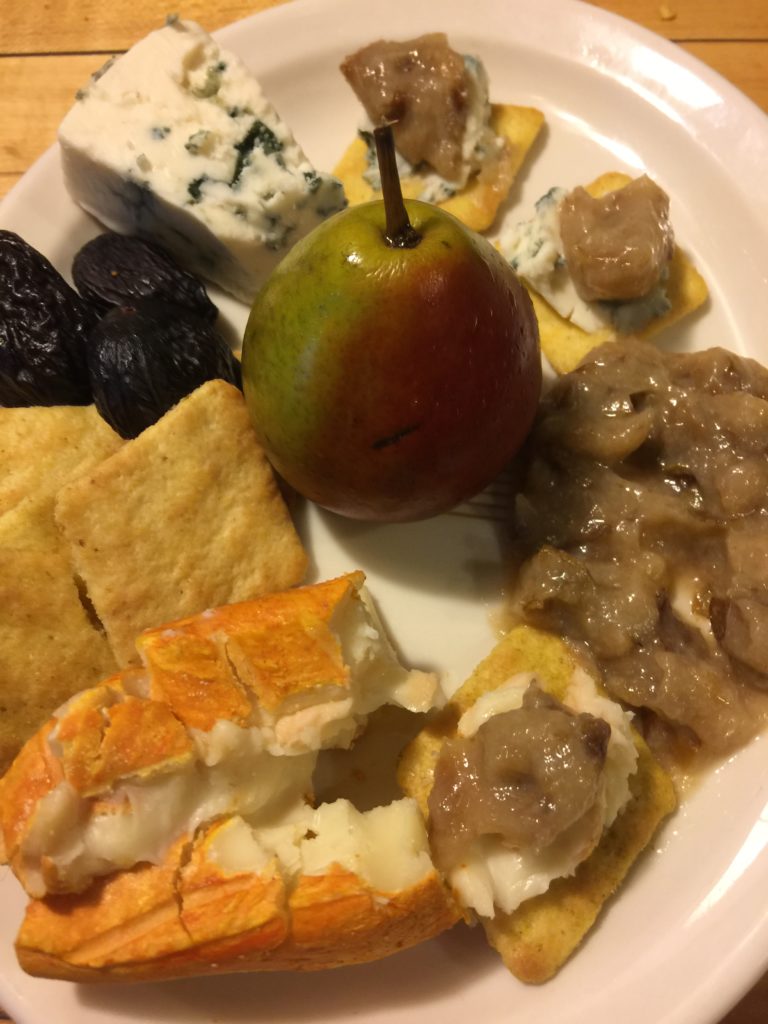 It all began when I was growing up. My parents owned property on Canandaigua Lake which had orchards bordering their land. The private road, and I mean a very rough, curvy, sloping gravel road would pass through orchards of Seckel pears where we’d pick bucketfuls. It was the memory of these little delights that has stayed with me to this day.
It all began when I was growing up. My parents owned property on Canandaigua Lake which had orchards bordering their land. The private road, and I mean a very rough, curvy, sloping gravel road would pass through orchards of Seckel pears where we’d pick bucketfuls. It was the memory of these little delights that has stayed with me to this day.
The growing season in New York is very short and finding these gems is no easy task. In fact, according to Jake Lagoner from Lagoner Farms, harvesting Seckel Pears is the first week of October, that’s it, and then stored through fall. Finding them in California, was nearly impossible. I’d ask produce managers and some never heard of them and other’s would try to order only to find out they missed the season and were sold out.
To those unfamiliar, these small pears are a tear-drop shaped variety with a round body and a short neck. The two-bite-sized pears have a green skin that can darken to an almost olive color with a red blush that ranges from a bright red to maroon. The creamy, white flesh of a Seckel pear is a bit more dense and coarse than other pears. For such a small pear, Seckels possess the sweetest flavor profile of all the pear varieties according to USA Pears. They believe that Seckels are to be the only truly American variety of pear grown commercially. Unlike other varieties planted in the U.S. from European cultivars, Seckels are thought to have originated as a wild seedling near Philadelphia. They were discovered in the early 1800’s.
Their size makes them perfect for spices and canning but I like their natural flavor. Mitzie Lagoner told me that they make pear cider which I can’t wait to try.
 In the mean time, I roasted a few for an hour at 375 and processed them with some of the skins still attached. I didn’t add a thing, just let them be the star. They might not make the prettiest fruit butter, but definitely one of the tastiest.
In the mean time, I roasted a few for an hour at 375 and processed them with some of the skins still attached. I didn’t add a thing, just let them be the star. They might not make the prettiest fruit butter, but definitely one of the tastiest.
Seckel Pear Butter pairs well with strong cheese, on toast and as a sauce to fowl and pork.
For a fresh relish, here’s a recipe from USAPear.org where they paired it with ham.
- Ham
- 1/4 cup Dijon mustard
- 3 tablespoons light brown sugar
- 1 teaspoon freshly ground black pepper
- 1 8-9 pound cured, smoked, bone-in half ham
- 3 small pears for garnish
- Relish
- 2 tablespoons white wine vinegar
- 1 teaspoon Dijon mustard
- 1 teaspoon kosher salt
- 1/2 teaspoon freshly ground black pepper
- 5 tablespoons olive oil
- 5 small pears, chopped into 1/2-inch cubes
- 3 mini seedless cucumbers, chopped into 1/2-inch cubes
- 1/2 cup pomegranate seeds
- 1/2 cup roughly chopped flat-leaf parsley
Prepare Ham:
Preheat oven to 350°. Whisk mustard, brown sugar, and black pepper in a small bowl. Set ham on a rack in a large roasting pan and pour in 2 cups water. Score fat in a crosshatch pattern, cutting about 1-2” deep. Brush ham with mustard mixture and roast, basting every 20 minutes with pan juices and tenting with foil if browning too quickly, until an instant-read thermometer inserted into thickest part of ham registers 135°, about 1-2 hours. Transfer ham to a cutting board and let rest 10 minutes before slicing. Serve with relish.
Prepare Relish:
In a large bowl, whisk the vinegar, mustard, salt and pepper in large bowl until combined. Slowly stream in oil and continue whisking until blended. Add pear, cucumber, pomegranate seeds and parsley and mix well. Do ahead: Relish can be prepared up to 4 hours before serving; chill.
I plan to freeze several, whole, and simply put in ziplock bags to enjoy in the spring. I’ll let you know how that works out.
Opinions of the author are her own and products were purchased or otherwise noted for discussion. I welcome your comments and suggestions for food and specialty items from upstate New York and can be reached at: linda@anexpatreturns.com
Follow me on Instagram and Facebook to stay current with the latest posts and more!

